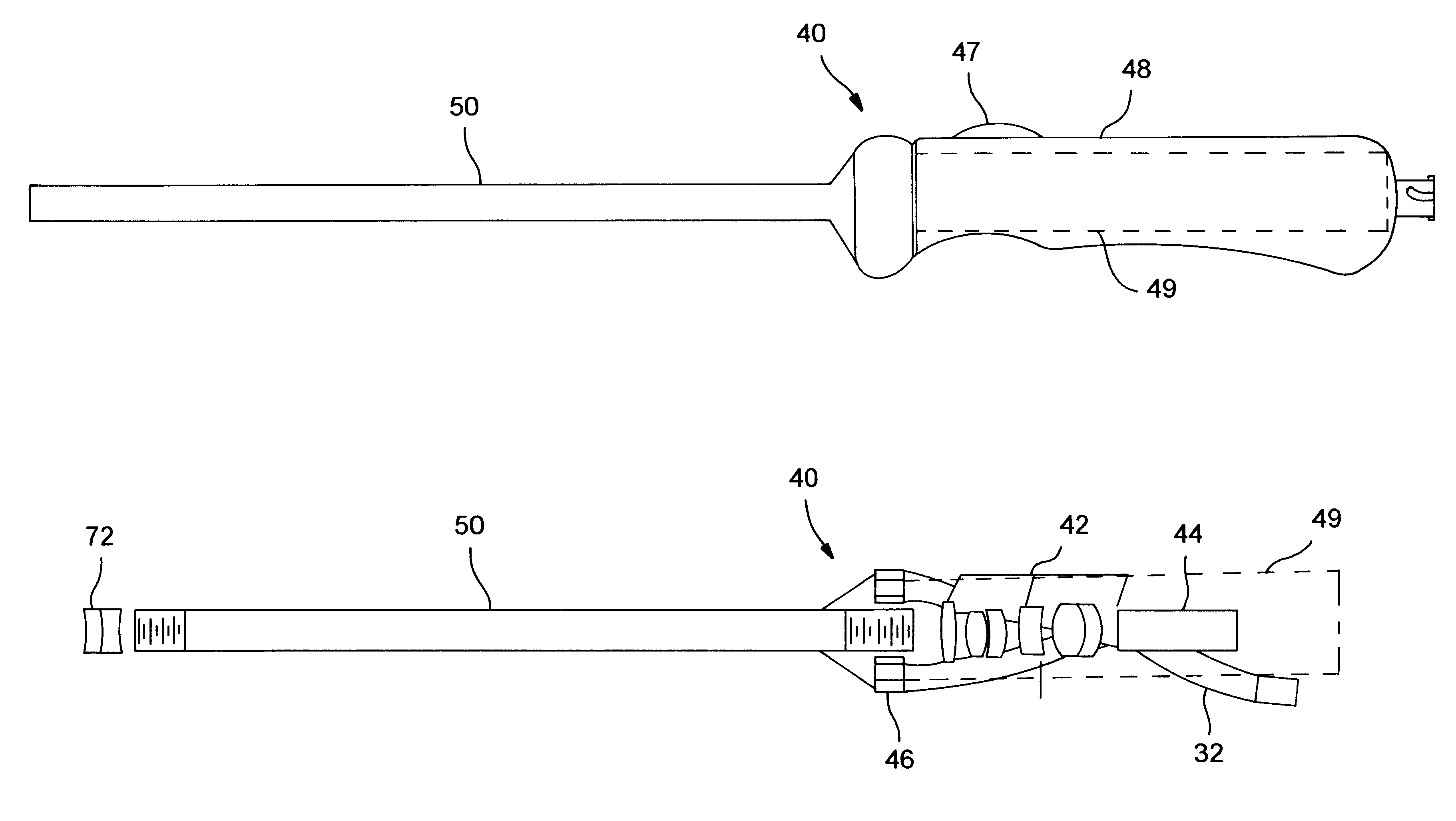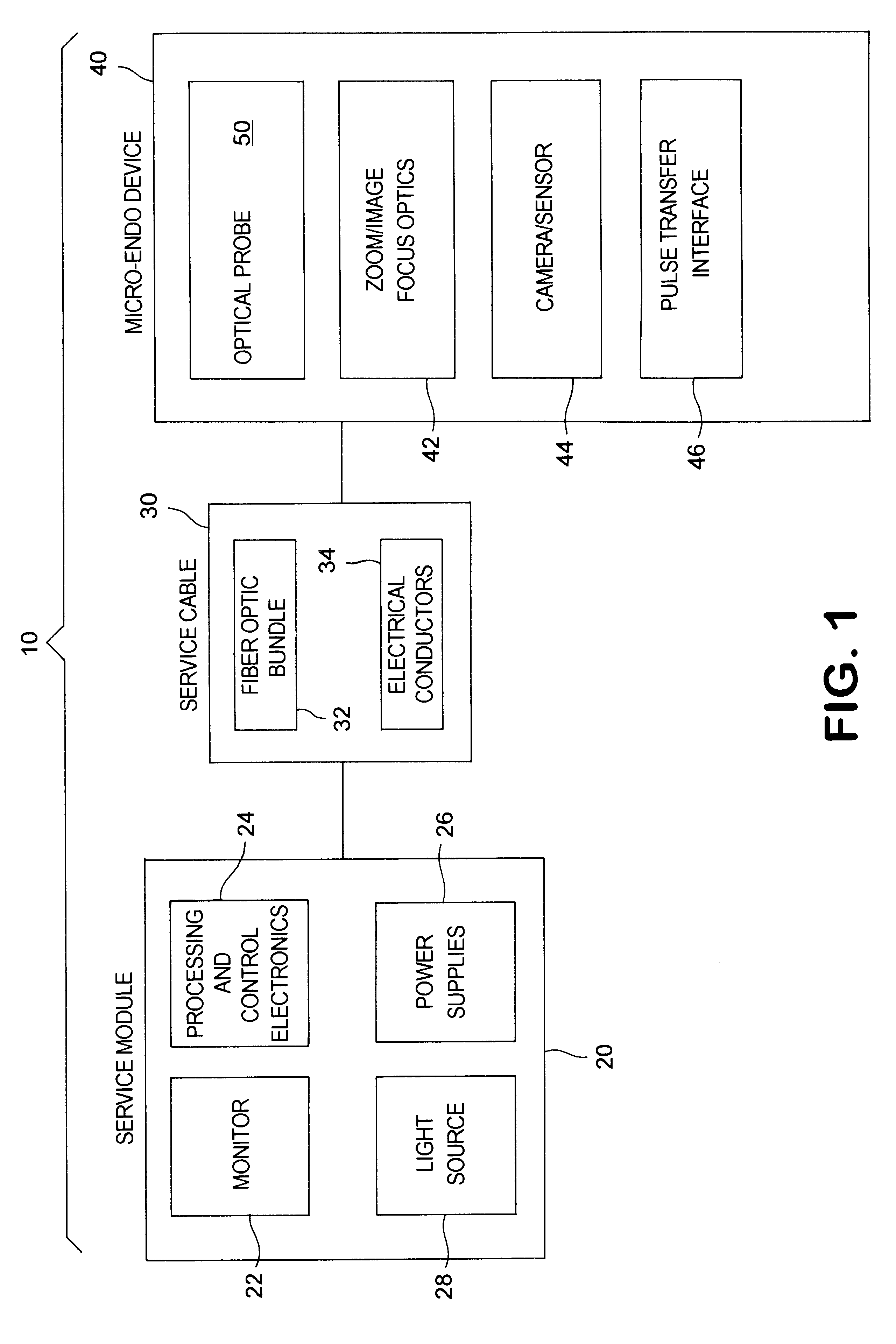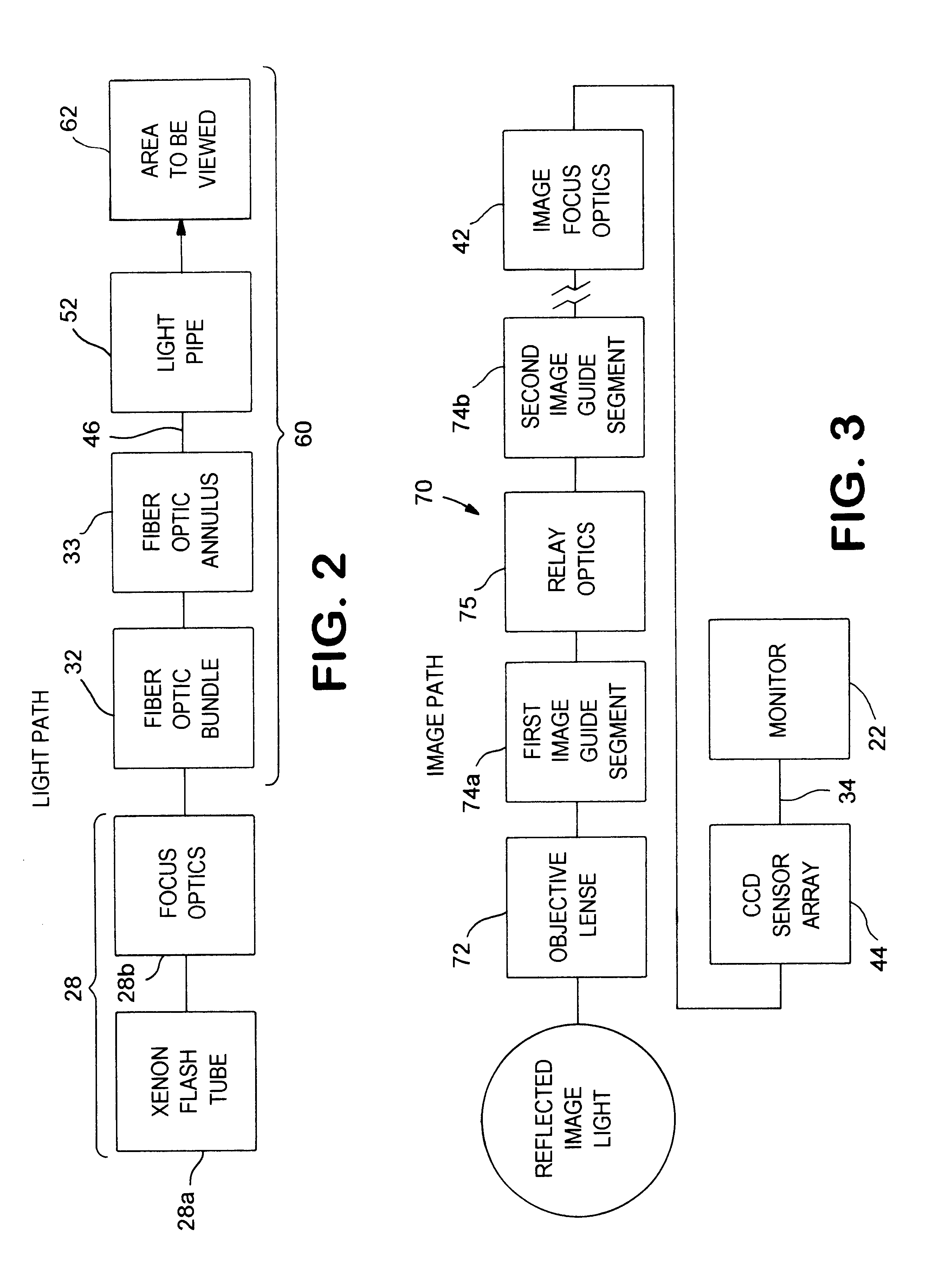Micro-endoscopic system
- Summary
- Abstract
- Description
- Claims
- Application Information
AI Technical Summary
Benefits of technology
Problems solved by technology
Method used
Image
Examples
Embodiment Construction
A micro-endoscopic system (ME system) incorporating a micro-endoscopic device (MED) 40 in accordance with the present invention is generally designated by the numeral 10. With reference to FIG. 1, one embodiment of the ME system is comprised of a service module 20, service cable 30 and a MED 40. The service module 20 contains a video monitor 22, a pulsed xenon light source 28, system power supplies 26 and system processing and control electronics 24.
A service cable 30 connects the service module 20 with the MED 40. The service cable includes a fiber optic bundle 32 to transmit light from the light source 28 to the MED 40. The service cable 30 also incorporates electrical conductors 34 to allow the service module 20 to communicate with the electronic portions of the MED 40. Because of the compact size of the ME system 10, the service cable may be as short as 2 meters. A short service cable 20 increases the amount of light reaching the viewing area by limiting the distance dependent l...
PUM
 Login to View More
Login to View More Abstract
Description
Claims
Application Information
 Login to View More
Login to View More - R&D
- Intellectual Property
- Life Sciences
- Materials
- Tech Scout
- Unparalleled Data Quality
- Higher Quality Content
- 60% Fewer Hallucinations
Browse by: Latest US Patents, China's latest patents, Technical Efficacy Thesaurus, Application Domain, Technology Topic, Popular Technical Reports.
© 2025 PatSnap. All rights reserved.Legal|Privacy policy|Modern Slavery Act Transparency Statement|Sitemap|About US| Contact US: help@patsnap.com



